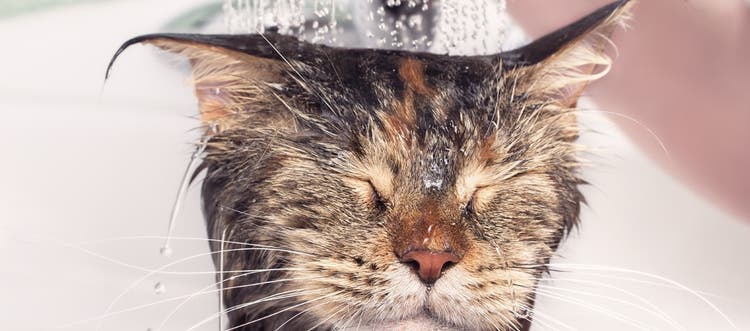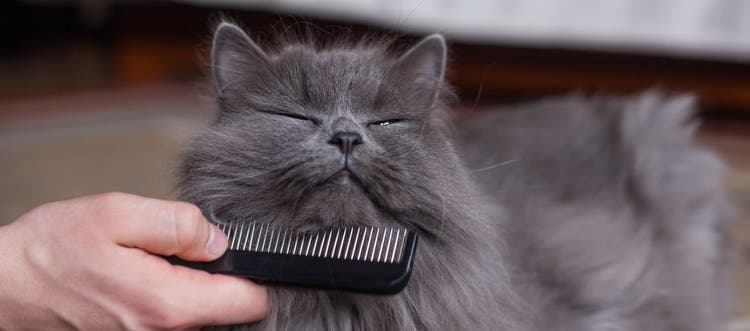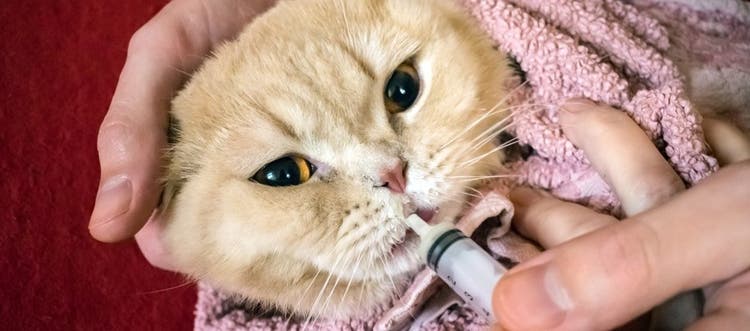Tips for cutting a cat’s nails.
There are plenty of reasons cat owners should clip their pet's claws: It prevents your cat's nails from getting caught and ripping; it can save your furniture from being scratched or torn up; and, if your cat likes to knead, it can even save you from getting painfully jabbed or scratched. While it's ideal to start trimming your cat's nails when they're still a kitten, you can teach an adult cat to tolerate their nails being clipped with a little patience (and a few treats).
Prepare Your Cat for Nail Trimming
Before you get to the actual clipping, it's a good idea to prepare your cat for the process of having their nails trimmed. Keep in mind that indoor cats tend to need more frequent nail trimmings than outdoor cats, whose nails may naturally wear down from being outside.
- Start by choosing a quiet place where your cat won't be distracted by other pets or activity outside.
- When your cat is relaxed or sleepy, gently massage their foot.
- If they're unbothered by the massage, gently squeeze the pad to make the nail extend.
- Release the nail and give them a treat.
- Go through all four feet, gently massaging and squeezing the pad to extend the nail and then giving them a treat. Go slowly if they don't like it; it's okay if you only do one paw or even one toe per day.
- Let them sniff the nail clippers to help them get comfortable. Make the clipping noise so they get used to the sound, too. If they're nervous about the clipping noise, follow the sound with a tasty treat.
How to Trim Cat Nails
Be sure to use a pair of cat-specific nail clippers, and make sure they're sharp. Dull clippers can cause the nail to split, which can be painful for your cat.
Here's how to start trimming:
- Only clip the sharp tip of the claw. You don't want to cut too much and get the quick, which is the pink part of the nail that gradually grows longer with untrimmed claws. It's always a good idea to have styptic powder on hand to stop the bleeding if you do accidentally cut their nails too short.
- Trim a few nails at a time and reward your cat with praise, love and treats. If they tolerate it well, continue clipping. Otherwise, don't worry about getting all of the nails at once.
- If your cat likes to be held, try recruiting another person to hold your cat against their chest while you clip the nails to make them feel more comfortable.
- If you get on a regular schedule of cutting your cat's nails every few weeks, they will eventually get used to it. Just be sure to keep the process positive and rewarding for them.
Tips for Trimming the Claws of an Aggressive Cat
If your cat absolutely hates getting their nails trimmed, there's still hope. Try going very slowly and making the process extra rewarding with plenty of treats or a special catnip toy that only comes out after nail clipping.
If your cat gets upset during the process, stay calm and take a break. Give it time — you may need to spend months just getting your cat comfortable with having their paws touched. If that still doesn't work, here are a few more ideas:
- If you need to restrain the cat to clip their nails, enlist another person to help with the burrito method. Wrap your cat in a towel and have one person hold the pet while the other person clips.
- Try calming them with catnip or a pheromone spray or plug-in.
- Take your cat to the vet. As a trained professional, your vet can trim your cat's claws for you and offer tips for trimming them at home based on how your cat acts during the process.
The good news is that cats have a natural urge to scratch. Provide your cat with plenty of scratching posts and scratcher toys that allow them to maintain their own nails to reduce the amount of nail trimmings they need.







